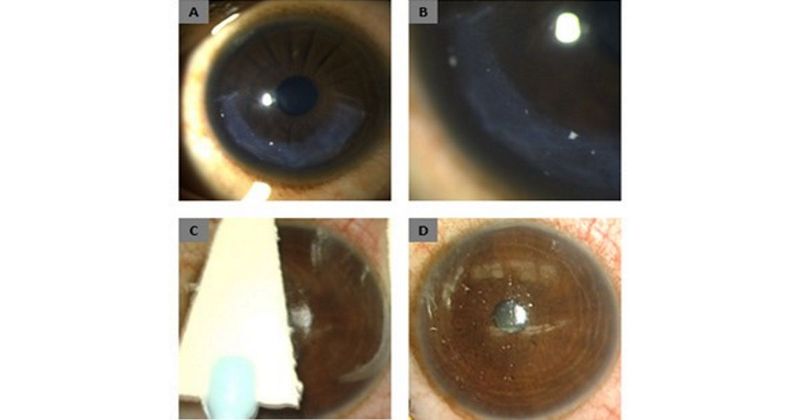Surgical sponge particles may remain after CAIRS implantation
Click Here to Manage Email Alerts
Corneal allogenic intrastromal ring segments have been described for the treatment of keratoconus.
They consist of implantable pieces of donor corneal stroma that, similar to Intacs (Addition Technology), reshape the recipient cornea, but with a theoretically lessened risk for certain postoperative complications including extrusion and melt. Before implantation, corneal allogenic intrastromal ring segments (CAIRS) are debrided of their epithelium and endothelium and then dried, which transiently shrinks and stiffens them, facilitating insertion. Debriding and drying the segments may be accomplished via the use of surgical sponges (Weck-Cel, Beaver-Visitec International).

Source: Jack S. Parker, MD, PhD
Recently, however, we have begun to observe retained particles of cellulose sponge in our postoperative CAIRS patients. These present as white flecks (Figures 1a and 1b) visible on the first postoperative day and persistent through all follow-up examinations. Initially, these findings were considered suspicious for epithelial inclusions or infectious infiltrates, but their stability over time and the absence of associated inflammation prompted diagnostic reconsideration. Review of surgical videos revealed sponge debris on the recipient corneal surface and clinging to the CAIRS before insertion (Figures 1c and 1d). Therefore, retained sponge material seems probable, although explantation and histological confirmation have not been performed.

Retained sponge micro-fragments are uncommon after ophthalmic surgery but have also been reported after trabeculectomy. Because cellulose sponges are more friable than those composed of polyvinyl alcohol (PVA), they may be likely to leave micro-fragments behind. Consequently, care should be taken to inspect for sponge debris before CAIRS insertion, and consideration should be given to using PVA sponges exclusively for this operation.
References:
- Jacob S, et al. J Refract Surg. 2018;doi:10.3928/1081597X-20180223-01.
- Parker JS, et al. J Cataract Refract Surg. 2021;doi:10.1097/j.jcrs.0000000000000582.
- Poole TR, et al. Br J Ophthalmol. 2002;doi:10.1136/bjo.86.12.1448.
